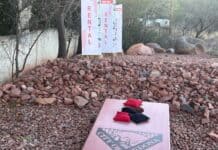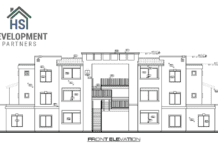Yavapai County has the money but now it’s a matter of how and where to spend it. The county announced late last year it received a $25 million grant through the federal Better Utilizing Investments to Leverage Development program with the purpose of building a connector road between State Route 260 and Cornville Road.
That was almost the easy part, as the county is now taxed with designing and building the road in a timely manner. No specific route has been chosen as of yet.
The county updated Sedona City Council on the plan during its Tuesday, March 26, meeting. No action was requested of council.
According to Yavapai County Assistant Public Works Director Roger McCormick, the county’s application was one of 851 submitted to the federal government for the grant. In all, 91 projects were selected, with this one being the only one in Arizona.
“The fact that we can bring a grant of this magnitude into Yavapai County and into Northern Arizona is quite the accomplishment and we’ve very proud we were able to do that,” he said.
McCormick said this is a multi-phase project that envisions a two-lane roadway and a bridge across the Verde River to connect the northern portion of the Yavapai-Apache Nation’s Middle Verde reservation and the Town of Camp Verde to State Rout 260 with a corridor extending to Cornville Road.
Councilman Bill Chisholm asked if the $25 million would be enough to cover the entire project. McCormick said it will cover the bulk but that the entire project carries an estimated price tag of $29.3 million — $22 million of which will be for the bridge alone. The county would cover the remaining amount through an ongoing half-cent sales tax.
McCormick also pointed out that time is of the essence, since the grant requires that all funds be fully expended by Sept. 30, 2025. To obtain funding authorization from the Federal Highway Administration, the county must complete an environmental impact study that is compliant with the National Environmental Policy Act.
The process means close coordination with local, regional, state and federal agencies, such as the U.S. Fish and Wildlife Service and the Environmental Protection Agency. All these parties will work together to determine the best route, which they hope to have determined later this year. The environmental assessment process will then begin.
There will be several opportunities for the public to hear more about the project during a series of meetings along the way.
“We have a long ways to go in a short amount of time due to the time constraints,” McCormick said. “We have had a lot of suggestions but soon it will be a matter of putting all the layers of the onion together to determine what makes the most sense.”
For more information on the project, visit verdeconnect.com.
Ron Eland can be reached at 282-7795, ext. 122 or by email at reland@larsonnewspapers.com





















